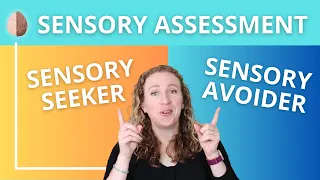Trying to make yourself feel happy immediately usually backfires. But that doesn’t mean it’s hopeless. You really can increase your happiness in life. This is a skill you can learn, and it’s something I’ve been thinking about a lot because it seems like these last two years have sucked the joy out of life a little bit. So here’s what I’ve been doing to get that joy back in my life.
Trying to make yourself feel happy immediately usually backfires. Either you end up just seeking momentary pleasures like food, drugs, buying stuff, hooking up, or distracting yourself — all of which can make your life worse in the long run — or you end up putting so much pressure on yourself to be happy that you make yourself more stressed out and miserable.
But that doesn’t mean it’s hopeless. You really can increase your happiness in life. This is a skill you can learn, and it’s something I’ve been thinking about a lot because it seems like these last two years have sucked the joy out of life a little bit.
I used to go places. I used to see people. I used to do things. I’m pretty sure I used to laugh more. And it’s like my emotions got compressed, like smashed down by the pandemic, and it’s easier now to feel apathetic or numb or low energy and not a lot of excitement.
So here’s what I’ve been doing to get that joy back in my life. And I think it’s been working.
So I make a lot of videos about how to feel less sad or anxious, but now I’m gonna make a couple of videos about how to feel more happiness and joy. So watch this space.
1. Focus on the Good
First, look for the good. What you focus on you get more of. What you pay attention to your brain gives more emphasis to, and it actually runs more happiness wires when you pay attention to happiness. So that means that you can actively change your brain to be happier by paying attention to the good things that are already there in your life.
Now, we’re not trying to force ourselves to feel good, but rather to water the seeds of happiness that are already there. So what does that mean? Two simple practices: First is gratitude practice, and second is the three-good-things exercise.
Gratitude Practice
So gratitude practice is where you set a reminder on your phone, and every day at the same time you just write down a few things that you’re grateful for.
Now, some of you out there are already typing in the comment section, “But my life sucks. 100% awful all the time.” Okay, I’m not talking about like, “Hey, you have to be grateful when you win the lottery.” I’m talking about things like zippers. For the last bazillion years, nobody had zippers, but we have zippers now. That’s cool, right?
Hot running water — how cool is that if you have it? Sunshine or snow — both of these can be good things. You get the idea.
Gratitude practice is really good for the body and the mind. I made a video on it. Check it out if you want. But gratitude also primes your brain to look for the good each day.
Three-Good-Things Exercise
And while gratitude is often for things outside of you, the three-good-things exercise is looking for the good that you’ve brought about today.
And it doesn’t have to be big things. All that matters is that you give emphasis to the good that you are doing. So little things like, “Oh, today I got out of bed. I made dinner. I cleaned up the toys 657 times today. I hugged my children.”
Research shows that within four to five days of writing three good things, just reflecting on the positive, this leads to noticing more positive. The positive keeps getting louder.
And clinical trials show that people who do this for 14 days have less burnout and depression. They have a better work/life balance. They have less conflict at school or work. And they have a higher level of happiness. And research also shows that the results from those 14 days can last for six months or more.
So the whole point of this is to show your brain what you want it to pay attention to, and then your brain is going to reward you by looking for more of it and, over time, making you happier.
Jose Ortega said, “What you think about you bring about. What you feed will grow. Tell me what you pay attention to, and I will tell you who you are.”
So my family and I are doing this at the dinner table each night. We ask everyone to share something that they’re grateful for and something good that they did that day, and I think it’s making a difference. So, I mean, parenting can be stressful and exhausting, and doing this activity with my kids has helped me enjoy being with them more.
2. Connect With others to be Happy
You know what feels amazing? Doing something that really makes someone else happy. I mean, this is a lasting sense of joy. And I hope you watch the video that comes out next week about the study showing that Americans and Brits, when they try to be happy, they tend to do something for themselves. They tend to buy something, eat something, watch something, and they tend to feel worse.
But people in Taiwan and Japan and Russia, when they try to be happy, they try to do something for their friends or family, and they tend to feel better.
Serve Others
So look for chances to serve and help others feel good. It just feels so good to do something nice for someone else.
The other day I was at Costco, and the lady checking out next to me, her credit card wasn’t working. So I just walked over there, and I stuck my card in her reader, and I surprised her by paying for groceries. And this was like a small thing; she didn’t have very many things on her cart. I mean, it wasn’t a big deal, but it made me smile that whole day.
And I promise you that if you start your day with the intention to find someone to do good to, you’ll find it. There’s always someone out there that you can do something nice for.
Do Something With Others
And it’s not just service that helps grow your little joy muscles. Any type of connection with others can make a big difference. We’re inherently social creatures, and as introverted and anxious as you or I may be, we still need people. Social connection helps regulate your nervous system. Let me give you an example:
The other day I was feeling pretty sick and exhausted and down. If you didn’t know, I’m pregnant right now. And then I had this phone call with a friend, and it was kind of a rousing phone call. And for the first time that day, I actually felt both emotionally and physically better.
So that’s the next thing: Find a way to connect with others, even if you don’t feel like it. Just put a date with your friend down on the calendar or check out the local events page and go to some random event.
Did you know that my first date with my husband was at the Payson Onion Days Festival. So that’s super classy, right? But dumb little things like this can lead to a lot of fun. So whatever you do, it doesn’t have to be fancy. Just connecting with other people can drastically improve your mood.
When I polled my audience and I asked everyone what do you do to increase your joy? I got a lot of people who said that the thing that makes them happy is their Zumba class or rejoining the choir, and they specifically said it’s just to get a sense of belonging, to be with other people in a common cause. So connection and service reaching out to other people is a really powerful way to increase your joy.
3. Slow Down and Savor the Moment To find Happiness
Number three is to slow down and savor any little moment that you can find. It’s easy for me to get caught up in the hustle of cleaning and cooking and taking care of kids and running a business, and it’s easy to miss the beautiful little moments. But this month I’ve set the goal to slow down and savor those moments with my kids.
The other day I was in a big rush making a feeble effort to dry my hair and put on some makeup, and River, my four-year-old, came up to me in the bathroom and said, “Mama, I love you.” And it would have been easy for me to just say, “Oh, I love you too” and get back to what I was doing. But I put more effort into hugging them and just looking them in the eyes and playing with them and reading to them.
And this sounds really simple, but it’s hard to do when the floors are a mess and the dishes are dirty and the laundry needs to be folded. But dishes are patient. I’ve found that slowing down and savoring the good helps me actually feel the happiness that is there in the moment. It helps me actually let that joy sink in.
So if you’d like to put this into practice, there’s a couple of things you can do. So one of them is like just try to take a picture of something good or beautiful each day, or write it down. So again, every time we emphasize the good, we reinforce in our brain to look for more good.
I really like the app Day One for journaling (they’re not a sponsor), and I try to put pictures of my kids or the good things from the day into the app. And then when I look back, I can remember all the good times and not just the stressful and exhausting ones.
So for example, the other morning at 5 a.m. my two-year-old came into bed with me, and then she started laughing hilariously. So I videoed it, and now I have a happy little memory for the rest of my life of Grace farting in my bed.
4. Laugh
So that brings us to number four. The last one is laughter. And isn’t laughter the best? I really think laughter is a wonderful way to convert the worst things into the best things. I haven’t seen research on this, but I personally believe laughter primes your nervous system to have joy, and it helps you release pain and fear and to just feel good.
Look for the Humor
When I was serving in Argentina, it was hard and it was exhausting and it was emotionally draining, and I didn’t want to write home about that. So each week I would make a list of the funny things that happened to me so that I had something to tell my family. So here’s an excerpt from my 21-year-old self (we were living in an insect-infested apartment full of mosquitoes and roaches and large spiders):
“Things are super excellent here. I really don’t have much time today, but thanks to everyone who wrote me. First off, business: I forgot to tell you how to harvest mosquitoes. Go to your wardrobe, swoosh your clothes around looking for something other than a skirt to wear, and breathe in. Surely a few dozen will fly up your nostrils.
“Also, the funniest thing: We were just standing in the kitchen one day — we don’t have a kitchen table — and a cockroach runs up Amber’s leg, up her skirt, and into her underwear and starts squirming around, and they’re squished between her undies and her leg. If that’s not funny, I don’t know what is.”
Okay, so these stories aren’t that great, but I had to find something funny to get through that painful situation.
So this is one of the ways I try to find joy even when life seems hard. So some months I set a rule for myself that I have to laugh hard every day. I make it a checklist thing. I’m a big fan of just setting one or two little monthly goals that take one minute and just checking off the days when I do them.
So I try to find a way to laugh with friends. And if that doesn’t happen, I just try to watch funny videos with my husband. And that really just seems to help when the days seem hard sometimes.
Emphasize the Good
And on that point, the algorithm on YouTube and Instagram is kind of like your brain. So the content you engage with, if you watch it, share it, like it, comment on it, that tells YouTube or Instagram to send you more of the same.
So I try to make an effort to heart all the reels on Instagram that are funny, and then I save them so I can watch them again later. And this shows Instagram what I like, so it shows me more funny videos.
Your brain works the same way. What you emphasize, you get more of. So anything you can do to emphasize the good in your life tells your brain what is most important, and then your brain devotes more resources to making you feel more of that. So anything good, anything happy, if you write it down, you think about it, you remember it, you tell other people, all of that tells your brain, “Make more neural pathways of happiness, please?”
So I’ve been using this little habit builder with my family to track our success. Every day we check it off if we hugged or if we prayed or if we said positive things at dinner or cleared our plates. These are the goals we were working on for the month. You can download it for free here.
And to be honest, those little teeny goals, they took only a minute or two each day, but I’ve noticed a huge difference in our home. We have something uplifting to talk about at dinner, and it just seems like we’re more connected and happier.
So I hope that you are able to find your sources of lasting happiness and find the joy that makes you feel alive and vibrant again. So this is not a formula for immediately feeling good, but I do think that over time it fosters a greater sense of happiness. So thank you for reading, I love you all, and take care.




